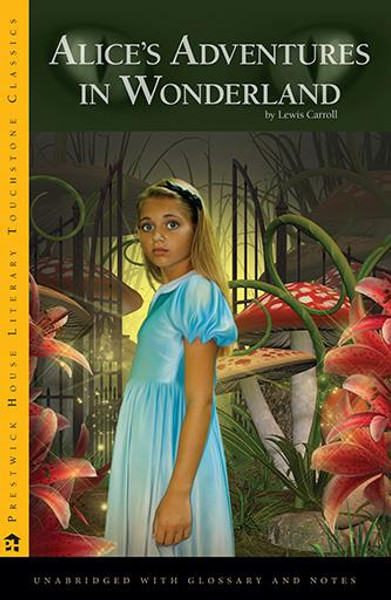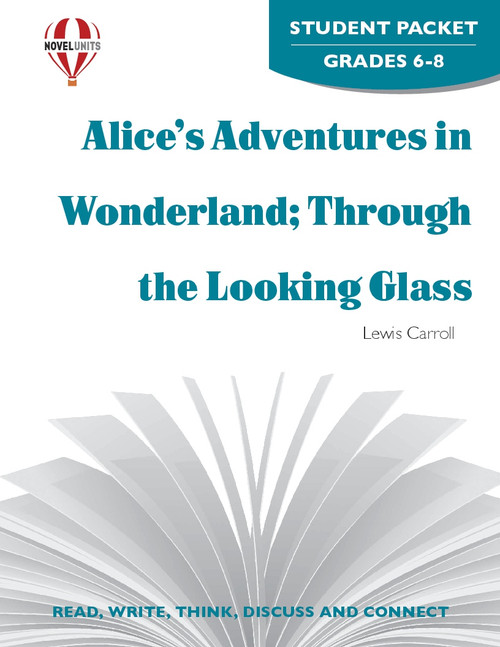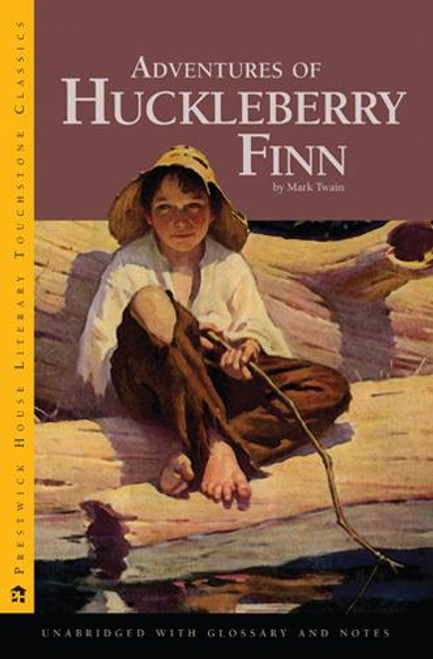Product Overview
Alice's Adventures in Wonderland: More Than a Cute Story for Kids
Alice's Adventures in Wonderland, written by Lewis Carroll, is an iconic literary work that has captivated readers of all ages with its whimsical characters, imaginative landscapes, and intricate wordplay.
Ordering Books for Alice's Adventures in Wonderland
There's no order minimum; you can order just one copy if that's all you need! :-) Order your class set of Alice in Wonderland books now, and take advantage of our bulk order discounts!
Notes About The Literary Touchstone Classics Edition of Alice's Adventures in Wonderland
We think the Literary Touchstone Classic edition of Alice in Wonderland is the best for classroom use. These affordable editions of beloved works are designed by former educators with the needs of both teachers and students in mind.
To help students fully understand the classic work they're studying, every Literary Touchstone Classic includes pre-reading notes that cite important aspects of the text that students should examine and question while reading. Each book also contains an extensive vocabulary list and a glossary that explains unfamiliar allusions and challenging passages.
If you're looking for books that will last for years, Literary Touchstone Classics fit the bill. Sturdy bindings and high-quality paper ensure they'll hold up to repeated use, and they're made in the U.S.A.
Other Editions
If you need to add onto a class set of a different edition or simply prefer another edition, contact us with the ISBN, and we'll check the availability for you.
If you are reading Alice's Adventures in Wonderland with younger students or students who need a simplified version, contact us, and we'll help you find one that is appropriate for your situation.
About the Book Alice's Adventures in Wonderland |
The story begins with Alice sitting beside her sister on a riverbank, when she notices a white rabbit speaking to itself about being late. Curiosity leads her to follow the rabbit down a rabbit hole, plummeting her into the peculiar world of Wonderland. Alice encounters various characters, including the Cheshire Cat, the Mad Hatter, and the Queen of Hearts--and finds herself in strange situations that challenge her perception of reality. Through a series of episodic adventures, Alice navigates the illogical laws of Wonderland. From attending a mad tea party to playing croquet with flamingos as mallets, each experience defies logic in its own way. Alice's adventures culminate in a trial over stolen tarts, during which she realizes the absurdity of Wonderland's denizens. The story concludes as Alice awakens on the riverbank, realizing her adventures were but a dream. Characters
|
Themes in Alice's Adventures in Wonderland | The Complexity of Growing Up: Alice in Wonderland masterfully explores the anxieties and excitement surrounding growth and change. Alice's physical transformations in the story serve as a metaphor for the changes that accompany growing up. Carroll depicts growth as unpredictable and often confusing, mirroring the real-world experience of transitioning from childhood to adulthood. Teachers can use Alice’s fluctuating size and identity to initiate discussions about the physiological, emotional, and social changes students undergo during their school years. The Question of Identity: Throughout the story, Alice is constantly questioned about who she is—not just by other characters, but she also questions herself. This theme of identity is particularly resonant for young readers and students navigating their self-concepts. The book provides an excellent platform for educators to explore topics of identity and self-awareness with their students, encouraging them to consider the influences on their personal identity and the importance of self-acceptance. Logic and Absurdity: The illogical world of Wonderland challenges conventional wisdom and logic, offering a stark contrast to the structured and rule-bound world above the rabbit hole. Carroll, through his nonsensical characters and their bizarre logic, critiques the arbitrariness and superficiality of certain social conventions. Teachers can draw from this theme to encourage critical thinking in students, prompting them to question and analyze the boundaries of logic and the role of rules in society. The Power of Curiosity: Alice’s adventure begins with a simple act of curiosity - following the White Rabbit down the hole. Her curiosity leads her through a series of extraordinary events, underscoring the theme that curiosity is a powerful force for learning and discovery. Educators can harness this theme to foster a culture of inquiry and exploration in the classroom, encouraging students to ask questions and seek out new experiences and understandings. Authority and Rebellion: Throughout her adventures, Alice encounters various figures of authority, from the Queen of Hearts to the Duchess. Her interactions with these characters often reflect a tension between obedience and rebellion, a theme that resonates with students navigating their relationships with authority figures in their lives. This theme can serve as a springboard for discussions about authority, power dynamics, and the concept of fairness in both the fictional world of Wonderland and the students’ real lives.
|
Activity Ideas for Alice's Adventures in Wonderland | Themes and Characters: Alice's Adventures in Wonderland provides a unique landscape for literary exploration. Encourage students to analyze the themes of growth, identity, and reality versus fantasy. Discuss Carroll’s use of nonsensical language and how it contributes to the narrative and characters' development. Assign character studies, asking students to explore the psychological profiles of characters like the Cheshire Cat, the Queen of Hearts, or even Alice herself. What do these characters represent? How do their motivations drive the story? Writing Prompts Inspired by Wonderland: Engage your students' creativity with writing assignments inspired by the book. Prompt them to write a diary entry from Alice’s perspective, a new adventure for Alice in Wonderland, or a letter Alice might write to her family about her experiences. These exercises not only enhance writing skills but also deepen students' understanding of the narrative and characters. The Mathematics of Wonderland: Carroll, a mathematician, wove mathematical concepts throughout Alice’s adventures. Use episodes from the book to introduce topics like logic, proportions (as Alice grows and shrinks), and even basic problem-solving strategies. For older students, explore more abstract concepts like infinity and paradoxes, exemplified by the Mad Hatter's Tea Party and other scenes. Philosophical Discussions: Alice's Adventures in Wonderland is ripe with philosophical questions and dilemmas. Use it as a springboard for discussions on topics such as the nature of reality, the concept of time, and questions of identity. For instance, ask students to contemplate the Caterpillar’s question to Alice, “Who are YOU?” What does this simple yet complex question mean? Exploring History and Victorian Culture: Finally, use the book to explore the historical context in which Carroll wrote, including Victorian England's culture, norms, and scientific understanding. Compare the children’s literature of Carroll’s time with today’s, discussing how societal changes affect storytelling.
|

Customer Service
- We guarantee you'll have the best customer service experience ever with Teacher's Pet Publications.
- We are here to help make things as easy as possible for you!
- Your information is secure. We don't keep your card number on file anywhere, and we don't sell, rent, or give away your personal information.
- We treat you as we would like to be treated as a customer!
- Need help? Have questions? We're happy to assist you! Contact Us












